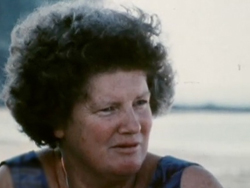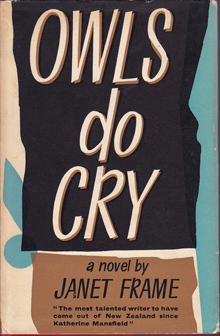 It’s a hundred years since the birth of Janet Frame, the acclaimed New Zealand writer. She has attracted attention not just for the allure of her writing, but for the fascinations of her life. A birth into poverty, attempting suicide and spending time in mental asylums are not the ideal ways to prepare for a life of literary success, but Frame is the only New Zealand writer to have won significant literary awards for all four types of writing: poetry, short stories, novels and non-fiction. In 1990 she was made a Member of the Order of New Zealand, the country’s highest civil honour.
It’s a hundred years since the birth of Janet Frame, the acclaimed New Zealand writer. She has attracted attention not just for the allure of her writing, but for the fascinations of her life. A birth into poverty, attempting suicide and spending time in mental asylums are not the ideal ways to prepare for a life of literary success, but Frame is the only New Zealand writer to have won significant literary awards for all four types of writing: poetry, short stories, novels and non-fiction. In 1990 she was made a Member of the Order of New Zealand, the country’s highest civil honour.
There were plenty of difficulties in Frame’s childhood, including her brother’s epilepsy and the deaths of two of her sisters, ten years apart, by drowning.
A Troubled Mind
As a young woman she was misdiagnosed as schizophrenic and spent years in mental institutions. Like another female writer whose mental tensions were misunderstood, Sylvia Plath, she was subjected to electroconvulsive shock therapy, receiving, it is said, over 200 such treatments. It was only the successful publication of her first collection, Lagoon and Other Stories, which prevented her from receiving a lobotomy, an operation to remove part of the brain, which would have ended any chance of an independent of creative life. It was only in later years, when she was reassessed by specialists in London, that the misdiagnosis of schizophrenia was dispelled.
The Perspective of the Outsider
Like Plath’s work too, there is a regular focus on death, suicide and mental imbalance in Frame’s novels. Frequently her odd central characters do not quite fit the conventions of the world around them, and struggle against the oppressiveness of social conformity. There is a good example in the short story Gavin Highly, where an eccentric neighbour with a love of books makes little attempt to fit in with the way of life of those around him. The young child narrator describes him in a way which would fit Frame herself:
But then he was the kind of man who is in league with many things—almost everything except people.
Read it in the New Yorker here.
Though travelling and living at different times in France, Ibiza, USA, UK and various parts of New Zealand, Frame also felt on the edge of society and wished to avoid attention in order to focus on her writing. She even went so far as to change her name for everyday purposes, while still publishing as Janet Frame.
Poetry
Frame published eleven novels, five collections of stories, a volume of poetry and a children’s book in her lifetime and a novella and a further poetry collection, The Goose Bath, was published after her death. Frame viewed poetry as ‘the highest form of literature because you can have no dead wood in a poem’. The excellent Poetry Archive has recordings of Frame reading some of her poems, most of which only appeared in print in The Goose Bath. The site also includes helpful observations on each of the poems. Listen to them here.
Prose
 Owls Do Cry, Faces in the Water and The Carpathians are perhaps Frame’s best-known novels, while The Lagoon and The Reservoir collections are her most popular short story books. There have, since her death, been a number of books collecting together different aspects of Frame’s writing.
Owls Do Cry, Faces in the Water and The Carpathians are perhaps Frame’s best-known novels, while The Lagoon and The Reservoir collections are her most popular short story books. There have, since her death, been a number of books collecting together different aspects of Frame’s writing.
An Angel at My Table is the collected three volumes of her prize-winning autobiography, later made into a film by Jane Campion.
Her work has a Modernist sensibility, while her clear experimentations with form and attention to the process of writing itself lead to Post-Modern considerations of her work. Her presentation of the power structures between men and women invite Feminist interpretation and her examination of New Zealand society lends itself to a Postcolonial perspective.
So there is plenty to get your teeth into and different angles you can take.
Further reading:
Article from The Guardian marking Frame’s centenary celebrations.
Frame’s biography on the site of the Janet Frame Literary Trust.
Frame on the Read NZ site.